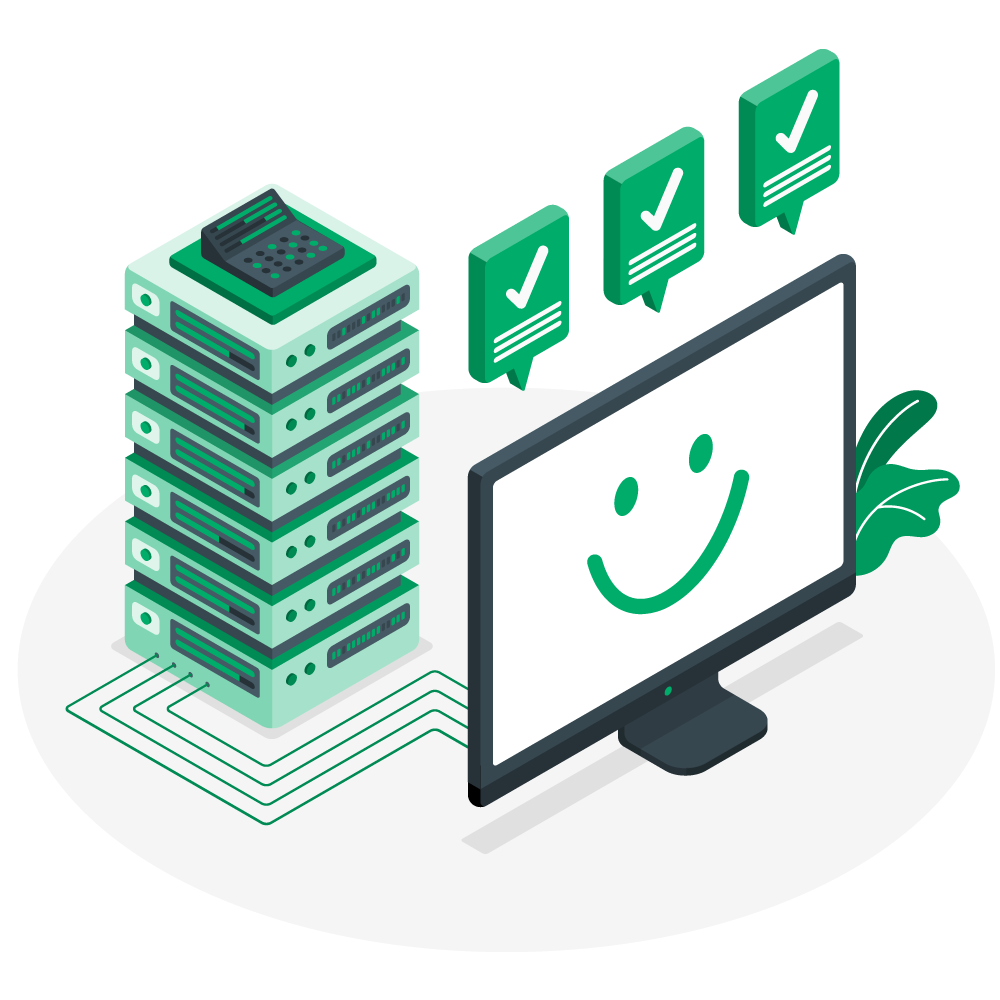Today, we can’t even imagine a world without the Internet. A world without remote access. This ability to access computers & data remotely has become a core part of our lives. But do you know who makes it possible? Let us introduce RDP – which stands at the forefront of this technology, enabling users to connect and control machines virtually from anywhere. This ultimate guide will dig deep into Remote Desktop Protocol and its fundamentals. By the end of this article, you could answer questions like – what is RDP? How does it work? & all.
Table of Contents
What is RDP?
RDP means Remote Desktop Protocol. RDP is developed by Microsoft. It enables users to connect and control remote computers via a network connection. It facilitates accessing a computer’s desktop, applications, and files from a different location – allowing users to perform tasks remotely as if they were physically present. From troubleshooting technical issues to collaborating with teams – RDP makes it all possible. The flexibility & convenience that comes with this facility enhances productivity. However, security measures are needed to safeguard against unauthorized access and potential data breaches. Overall, RDP is a valuable tool for remote work and connectivity in today’s digital world.
RDP Special Features
- 128-bit encryption for keyboard & mouse data using RC4 encryption.
- RDP can send audio from a remote desktop to the user’s computer.
- For data transmission, RDP backs up to 64,000 independent channels. Data is encrypted using 128-bit keys. The bandwidth reduction can enhance the data transfer rate even in low-speed connections.
Importance of Remote Desktop Connection
RDP empowers businesses & individuals to access computers regardless of physical location.
1. Enhanced Connectivity
RDP is pivotal in boosting connectivity by enabling users to access critical resources, applications, and files from remote locations.
2. Productivity Enabler
By eliminating geographical barriers, RDP enables you to collaborate hassle-freely – help troubleshoot technical issues, and manage essential data remotely.
3. Flexibility & Efficiency
Remote work enhances flexibility, promotes work-life balance, and facilitates smooth collaboration among distributed teams.
How RDP Works?
Here’s a simple breakdown of how RDP works:
1. Client Initiates Connection
A user initiates an RDP session by sending a connection request from their local device (the client) to the remote computer (the server).
2. Authentication
The server verifies the user’s credentials to ensure authorized access.
3. Screen Image Transmission
Once authenticated, the server transmits screen images of the remote desktop to the client device.
4. Input Transmission
The client device sends input from peripherals such as the keyboard and mouse back to the server.
5. Real-Time Interaction
This continuous data exchange enables users to interact with the remote desktop environment in real time – allowing them to execute commands, run applications, and perform tasks remotely.
6. Data Encryption
RDP encrypts the data transmitted between the client & server, protecting it from unauthorized access or interception.
RDP Use Cases
RDP serves various practical purposes across different industries & scenarios, facilitating smooth connectivity and remote access to computer systems. Here are some general use cases:
1. IT Support
IT professionals use RDP to remotely troubleshoot technical issues on end-user devices, diagnosing problems and providing assistance without needing to be physically present.
2. Remote Work
In today’s remote work environment, employees utilize RDP to access their work computers and corporate resources from home or while traveling, enabling them to stay productive & connected.
3. Education
Educational institutions leverage RDP for remote learning initiatives, allowing students & teachers to access virtual classrooms, educational materials, and software applications from anywhere.
4. Collaboration
RDP enables distributed teams to collaborate effectively by providing access to shared files, applications, and resources, fostering innovation and teamwork.
5. Server Management
System administrators use RDP to manage and administer remote servers, performing tasks such as software updates, configuration changes, and troubleshooting without physically accessing the server.
Benefits of RDP
RDP offers a range of benefits for individuals & businesses, enhancing connectivity, productivity, and efficiency. Here are some key advantages:
1. Flexibility
RDP allows users to access their desktops & applications from anywhere with an internet connection, enabling remote work & flexibility in work arrangements.
2. Cost Savings
By centralizing resources & applications on remote servers, RDP reduces the need for expensive hardware upgrades & maintenance, resulting in cost savings.
3. Collaboration
RDP facilitates collaboration among distributed teams by providing real-time access to shared files, fostering teamwork & innovation.
4. Resource Optimization
RDP optimizes resource usage by centralizing data on remote servers, improving scalability & performance.
5. Security
RDP incorporates encryption and authentication mechanisms to secure data transmission and prevent unauthorized access, ensuring data confidentiality.
6. Disaster Recovery
In the event of hardware failures or disasters, RDP allows users to access their data from remote locations – enabling quick recovery & minimizing downtime.
Issues with RDP
While RDP offers numerous benefits, it also presents some challenges and vulnerabilities that users must be aware of:
1. Security Risks
RDP can be vulnerable to security threats such as unauthorized access, brute force attacks, and malware infections, potentially leading to data breaches and system compromise.
2. Bandwidth Constraints
RDP sessions may experience latency and performance issues, especially over low-bandwidth or congested network connections, impacting user experience.
3. Compatibility Issues
Different versions of RDP may not be fully compatible with each other – leading to compatibility issues and potential functionality limitations.
4. Resource Consumption
RDP sessions can consume significant system resources, including CPU and memory, especially when multiple sessions are active simultaneously.
5. Network Configuration
Configuring firewalls, routers, and network settings to allow RDP traffic can be complex and may require specific port configurations and security measures to ensure secure connections.
6. Reliability
RDP connections may occasionally experience disruptions or disconnects due to network issues or server downtime, leading to interruptions in work.
Performance Optimization for RDP Sessions
Optimizing performance for RDP sessions is crucial for ensuring a smooth user experience. Here are some effective strategies:
1. Bandwidth Management
Utilize bandwidth management tools to prioritize RDP traffic and allocate sufficient bandwidth for optimal performance.
2. Network Optimization
Implement network optimization techniques such as compression, caching, and Quality of Service (QoS) to reduce latency and minimize data transmission overhead.
3. Graphics Settings
Adjust graphics settings to optimize performance, balancing visual quality with responsiveness. Lowering resolution and disabling unnecessary visual effects can improve performance in graphics-intensive applications.
4. RemoteFX Integration
Leverage RemoteFX enhancements, such as enhanced graphics rendering and multimedia streaming, to enhance the user experience during RDP sessions.
5. Session Management
Limit the number of concurrent RDP sessions to prevent resource contention and ensure adequate system resources for each user.
6. Hardware Upgrades
Upgrade server hardware, such as CPU, memory, and storage, to accommodate increased RDP session loads and improve overall performance.
7. Monitoring & Optimization
Regularly monitor RDP session performance metrics and adjust settings to optimize performance and maintain user satisfaction.
RDP Security Concerns
1. Unauthorized Access
RDP can be susceptible to unauthorized access if proper security measures are not in place, leading to potential data breaches and system compromise.
2. Brute Force Attacks
Attackers may attempt to gain access to RDP-enabled systems by systematically trying different combinations of usernames and passwords until they find the correct credentials.
3. Man-in-the-Middle Attacks
Without encryption, RDP sessions are vulnerable to interception by malicious actors, who can eavesdrop on communications and manipulate data exchanged between the client & server.
4. Data Breaches
Inadequately secured RDP connections can result in data breaches, exposing sensitive information to unauthorized parties and compromising data confidentiality and integrity.
5. Mitigation Strategies
Businesses should implement strong password policies, multi-factor authentication, network-level authentication (NLA), and encryption protocols such as TLS/SSL to protect RDP connections from unauthorized access & interception.
Advanced RDP Features
RemoteApp
RemoteApp allows individual applications to be virtualized and accessed remotely, reducing bandwidth consumption and improving scalability for remote users.
RemoteFX Enhancements
RemoteFX delivers enhanced multimedia performance and USB device redirection, enhancing responsiveness and feature-rich experience of RDP sessions.
Azure Active Directory (AAD) Integration
Integration with Azure Active Directory enables centralized identity management and access control across diverse RDP environments, enhancing security and compliance.
Conclusion
RDP is the backbone of modern remote access technology, which empowers us with unparalleled connectivity. While its benefits are substantial, addressing security concerns & optimizing performance are also essential for maximizing its utility and minimizing associated risks. Leveraging advanced features, best practices, and security measures – you can harness the full potential of RDP to drive growth. If you need help with RDP, you can connect with top server providers like Leasepacket.
FAQs
Q.1 What are the benefits of RDP?
RDP enables remote access and control of computers, fostering flexibility, collaboration, and cost savings for individuals & organizations.
Q.2 What are the security concerns associated with RDP?
Security risks include unauthorized access, brute force attacks, and potential data breaches, highlighting the importance of implementing robust security measures.
Q.3 How can RDP performance be optimized?
Bandwidth management, network optimization, adjusting graphics settings, leveraging RemoteFX enhancements, and monitoring performance metrics are effective strategies for optimizing RDP performance.
Q.4 What are some advanced features of RDP?
Advanced features include RemoteApp for virtualizing applications, RemoteFX for multimedia performance enhancements, and Azure Active Directory integration for centralized identity management.
Q.5 What measures can be taken to mitigate RDP security risks?
Password policies, multi-factor authentication, network-level authentication (NLA), and encryption protocols such as TLS/SSL can mitigate security risks associated with RDP.
Q.6 What are common use cases for RDP?
RDP is commonly used for IT support, remote work, education, collaboration, and server management – enabling smooth connectivity and access to resources from any location.

























